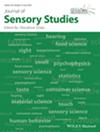Effects of repeated tasting sessions on acceptability, emotional responses, and purchasing behaviors of waste-to-value-addedSCOBY (symbiotic culture of bacteria and yeast) ice cream
Abstract
This study investigated the effects of repeated exposure on acceptability, emotional responses, and purchase intention of a novel symbiotic culture of bacteria and yeast (SCOBY) ice cream, compared to a control (no extra additives) and a guar gum ice cream sample, using three sessions: a survey (SCOBY information) and two tasting sessions (repeated-exposure effect). Participants initially conducted blind evaluations of all samples, followed by an informed tasting. The blind tasting sessions evoked high arousal emotions for the SCOBY ice cream and positive emotions for the control and guar gum samples. The second session showed a rise in liking for sweetness (5.6–6.5) and texture (5.6–6.7) of the SCOBY samples. Sensory attributes such as flavor (odds ratio = 1.7) and texture (odds ratio = 1.7), coupled with positive emotions such as “happy” (odds ratio = 3.8), “pleasant” (odds ratio = 0.4), and “interested” (odds ratio = 3.8) affected purchase intention. The findings of this study provide valuable insights into participants' liking and emotional responses during repeated exposures to stimuli.
Practical Applications
The study's findings show that repeated exposure to novel products enhances consumer acceptance and emotional responses, challenging the current formats of traditional sensory studies. This implies that the introduction of novel products can be successful with repeated tasting exposure strategies. The focus on improving familiarity with sensory attributes, especially flavor and texture, can positively impact purchase intention. This insight can guide product positioning, marketing campaigns, and flavor development efforts, encouraging the successful integration of innovative products into the market.


 求助内容:
求助内容: 应助结果提醒方式:
应助结果提醒方式:


